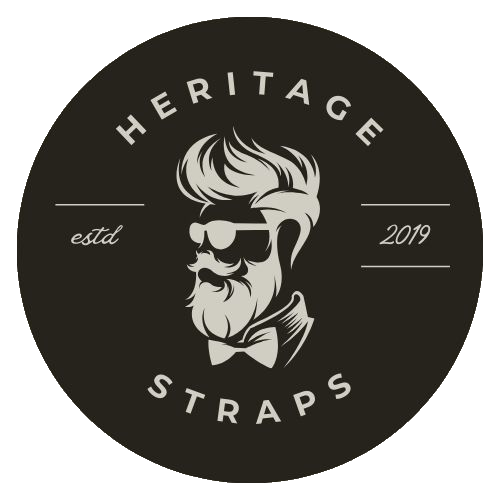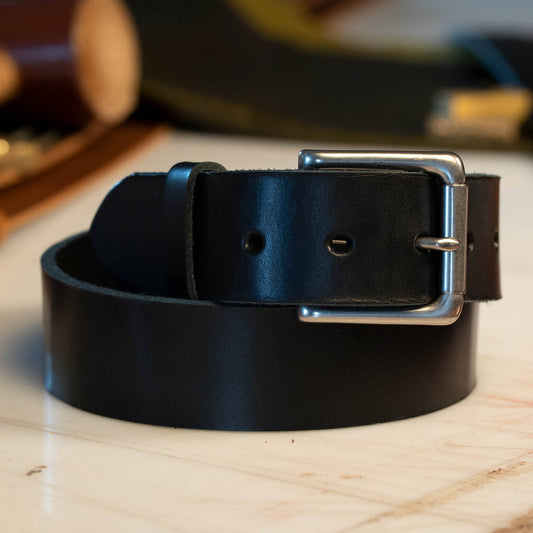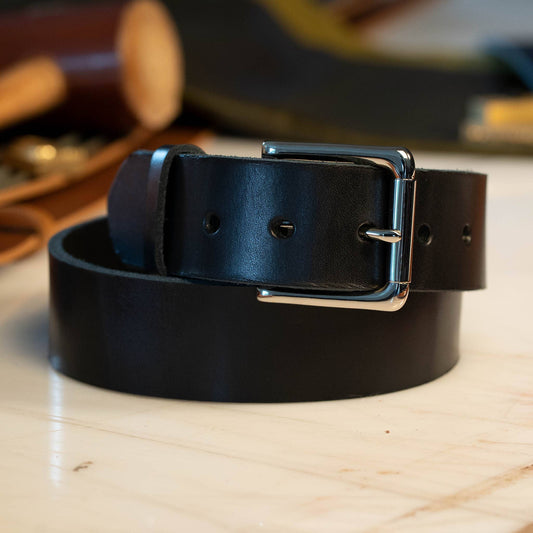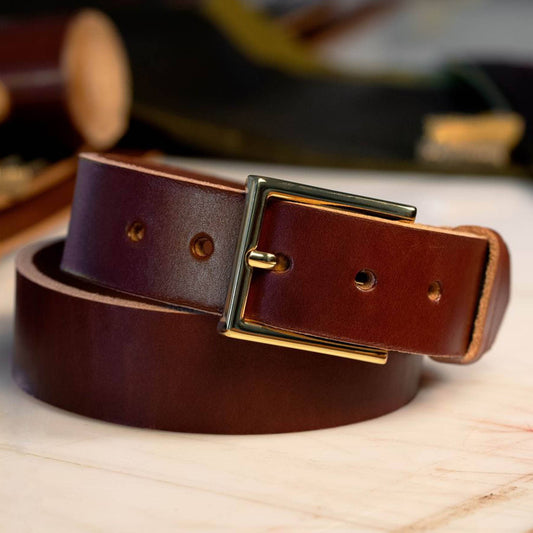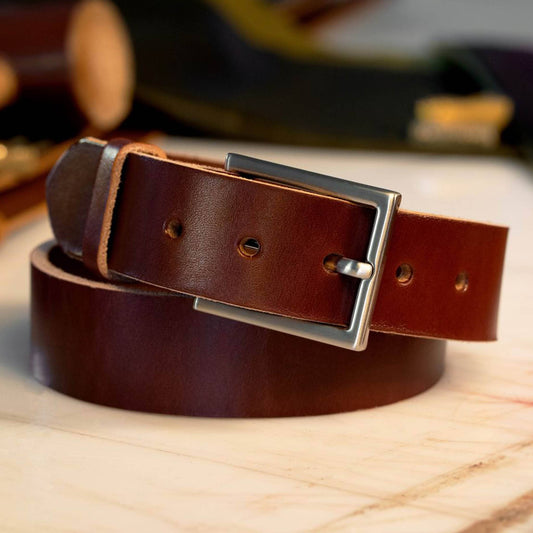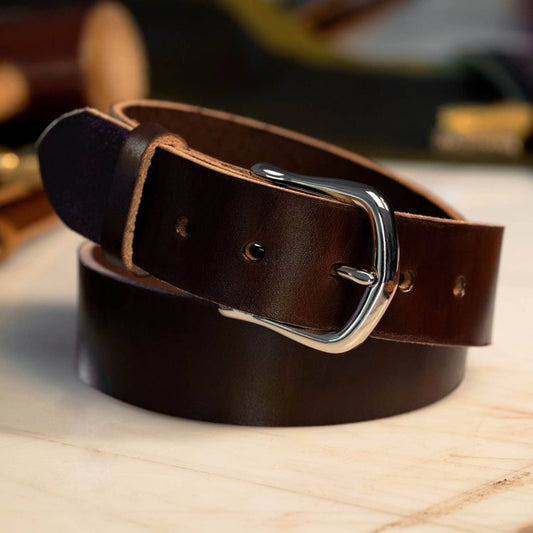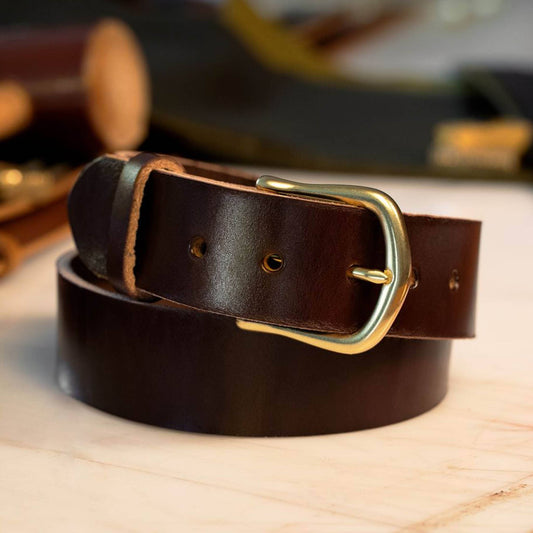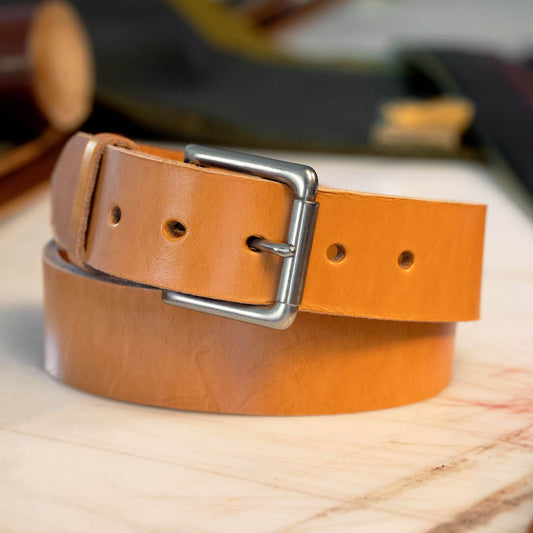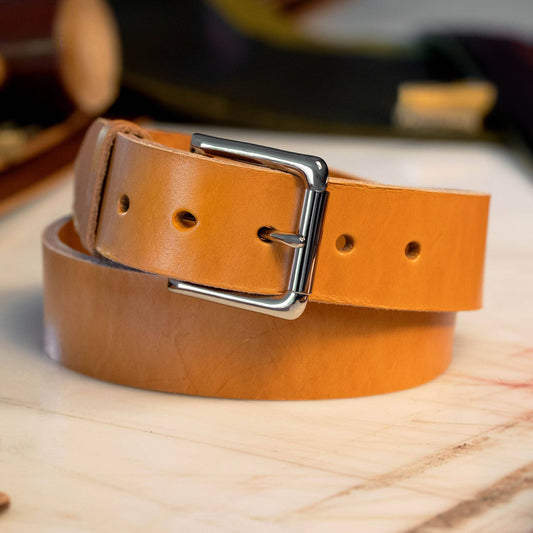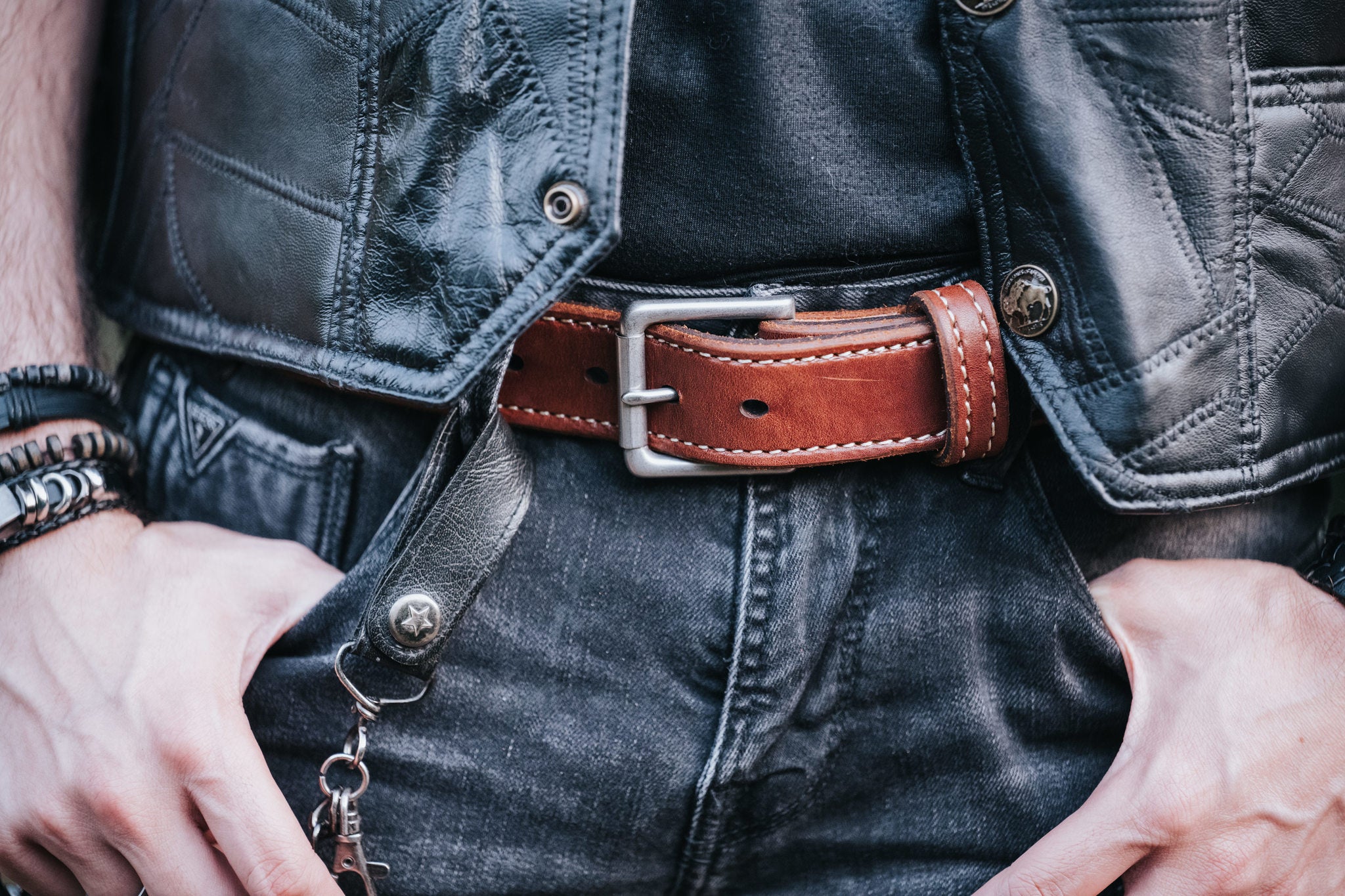
Staff Favorites
-
Heritage Hues Collection: Black (Casual)
Regular price From $85.00 USDRegular priceUnit price / per -
Heritage Classico Collection: British Brown (Dress)
Regular price $90.00 USDRegular priceUnit price / per -
Heritage Timeless Collection: Havana (Semi-Dress)
Regular price $85.00 USDRegular priceUnit price / per -
Heritage Hues Collection: London Tan (Casual)
Regular price From $85.00 USDRegular priceUnit price / per
Most Commonly Asked Questions
What is full-grain leather, and why is it preferred for high-quality belts?
Full-grain leather is the topmost layer of the hide, known for its natural grain and imperfections, which add character. It's preferred for high-quality belts because of its exceptional durability, strength, and resistance to wear and tear. Over time, it develops a unique and appealing patina, making each belt a one-of-a-kind piece. Its dense composition ensures long-lasting performance, making it the ideal choice for those seeking both style and longevity in their belts. In essence, full-grain leather embodies the pinnacle of belt craftsmanship.
How do I determine my belt size for a perfect fit?
Professional Sizing Guidelines:
Method 1: Measure your belt from the most frequently used hole to the point where the leather folds and meets the buckle. This provides an accurate measurement for a more tailored fit.
Method 2: In the past, belts were custom-made based on true waist size. However, contemporary retail practices have led to a standard where belts are typically 2 inches larger than your pants size. For instance, if you wear 36-inch pants, a 38-inch belt is recommended.
To apply this method, simply add 2 inches to your pants size. For example, if your pants size is 38, it is advisable to order a 40-inch belt. This ensures your belt fits comfortably and complements your attire with precision, embodying both style and ease.
What are the key characteristics to look for when assessing the quality of a leather belt?
When assessing the quality of a leather belt, key characteristics to consider include the type of leather used (full-grain leather being the highest quality), the thickness and density of the leather, the quality of the stitching, and the buckle material.
Inexpensively manufactured belts often utilize low-grade split leather that is adhered together and stitched using a thin thread, typically with edges coated in paint. Typically, these belts exhibit a limited lifespan, lasting only a few months before adhesive failure leads to structural deterioration. Distinguishing between a high-quality belt and a poorly constructed one can be challenging without a clear understanding of the materials and craftsmanship involved in producing a superior belt.
How can I maintain and care for my leather belt to ensure it lasts longer?
Leather belt maintenance is a straightforward process. Our preferred leather types, such as full-grain English Bridle, Bridle, or Harness leather, are saturated with natural oils and fats, ensuring long-lasting conditioning. While an annual light conditioning is recommended, it's worth noting that some of our belts, after more than 6 years of regular use without conditioning, remain in impeccable condition. The key principle is to keep the belt free from dirt or debris; in case of dirt accumulation, simply employ a dry brush to remove it. This straightforward care routine ensures the longevity and enduring quality of your leather belt.
Are there different buckle styles and finishes available for leather belts, and how do I choose the right one for my outfit?
Our "Dress buckle" is tailored for formal occasions, offering an understated and elegant appearance that complements formal attire seamlessly.
The "Anchor buckle," categorized as semi-dress, offers versatility, equally suitable for formal occasions as well as casual settings, providing a balance between sophistication and comfort.
Lastly, our "Roller buckle," designed for casual or jean wear, stands as the ideal everyday choice, combining style and functionality for everyday use.
Our three distinct buckle styles are crafted with a premium solid brass, available in two finishes: a polished lacquered option, or plated in either nickel matte or chrome. The choice of solid brass as the core material stems from its inherent strength and its remarkable plating compatibility. Notably, buckles with a brass core exhibit a unique quality—they have the resilience to bend rather than break. In contrast, cheaper alternatives, often fashioned from zinc or steel, tend to develop cracks, break, or lose their plating over time. Opting for brass as our core material ensures the enduring quality of our buckles, maintaining their plating and structural integrity.
